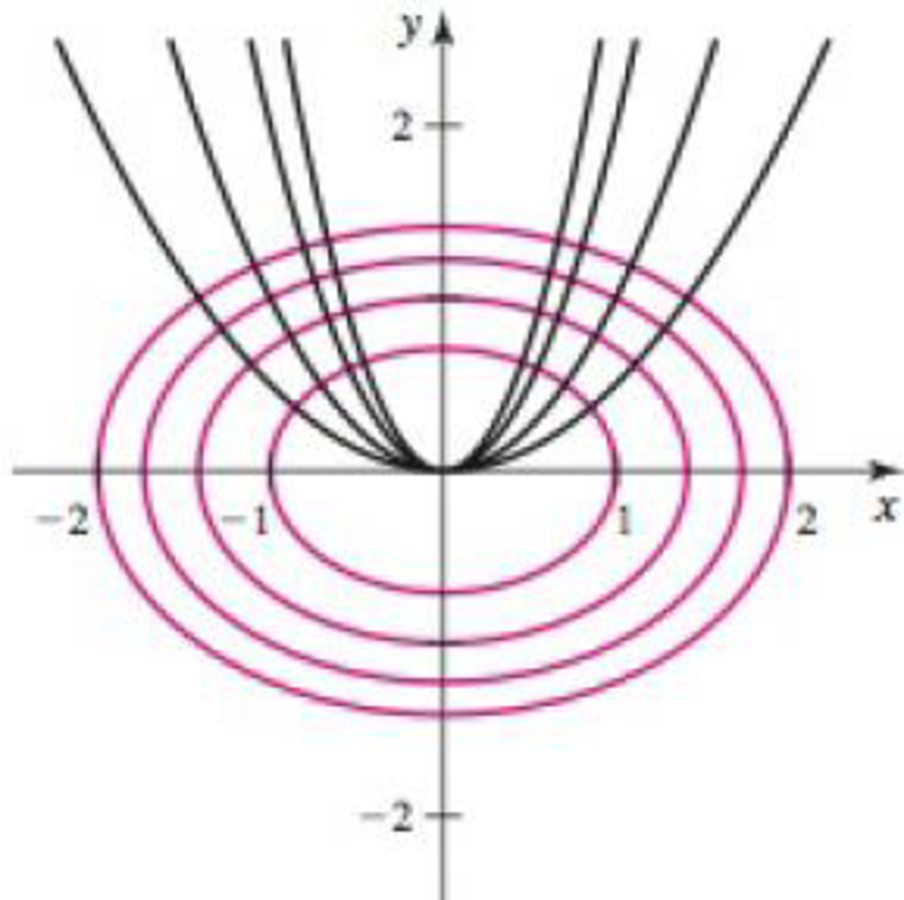
Orthogonal trajectories Two curves are orthogonal to each other if their tangent lines are perpendicular at each point of intersection (recall that two lines are perpendicular to each other if their slopes are negative reciprocals). A family of curves forms orthogonal trajectories with another family of curves if each curve in one family is orthogonal to each curve in the other family. For example, the parabolas y = cx2 form orthogonal trajectories with the family of ellipses x2 + 2y2 = k, where c and k are constants (see figure).
Find dy/dx for each equation of the following pairs. Use the derivatives to explain why the families of curves form orthogonal trajectories.

79. y = mx; x2 + y2 = a2, where m and a are constants
Want to see the full answer?
Check out a sample textbook solution
Chapter 3 Solutions
Student Solutions Manual, Single Variable for Calculus: Early Transcendentals
Additional Math Textbook Solutions
Elementary Statistics
A First Course in Probability (10th Edition)
Algebra and Trigonometry (6th Edition)
Elementary Statistics: Picturing the World (7th Edition)
College Algebra with Modeling & Visualization (5th Edition)
- Let f(x, y) = 2x + 3y+ In(xy)arrow_forward(3) (16 points) Let D = [0, π/2] × [0, 7/6]. Define T: DCR2 R3 by → T(0, 4) = (2 sin cos 0, 2 sin sin 0, 2 cos x). Let S be the surface parametrized by T. (a) (8 points) Determine the normal, call it n(p), for the tangent plane TS at an arbitrary point p = T(0, 4). (b) (4 points) Show that n(p) parallel to the position vector T(0, 4) determined by p? Do the two vectors have the same direction or opposite direction? Explain. (c) (4 points) At which points p, if any, is TS parallel to the xy-plane?arrow_forward5:19 0 TEMU TEMU >>> 49 95% University at Albany - Single Sig... L Lumen OHM D2L HW4- AMAT100-Precal HW4 Score: 12.99/21 Answered: 18/21 × Question 16 Score on last try: 0 of 1 pts. See Details for more. > Next question Get a similar question You can retry this question below Find the inverse for the function k(x) = √√7x+12 k-¹(x) = Question Help: Video Message instructor Submit Question esc ||| F1 80 ୮ (x) = tarrow_forward
- Algebra & Trigonometry with Analytic GeometryAlgebraISBN:9781133382119Author:SwokowskiPublisher:Cengage
